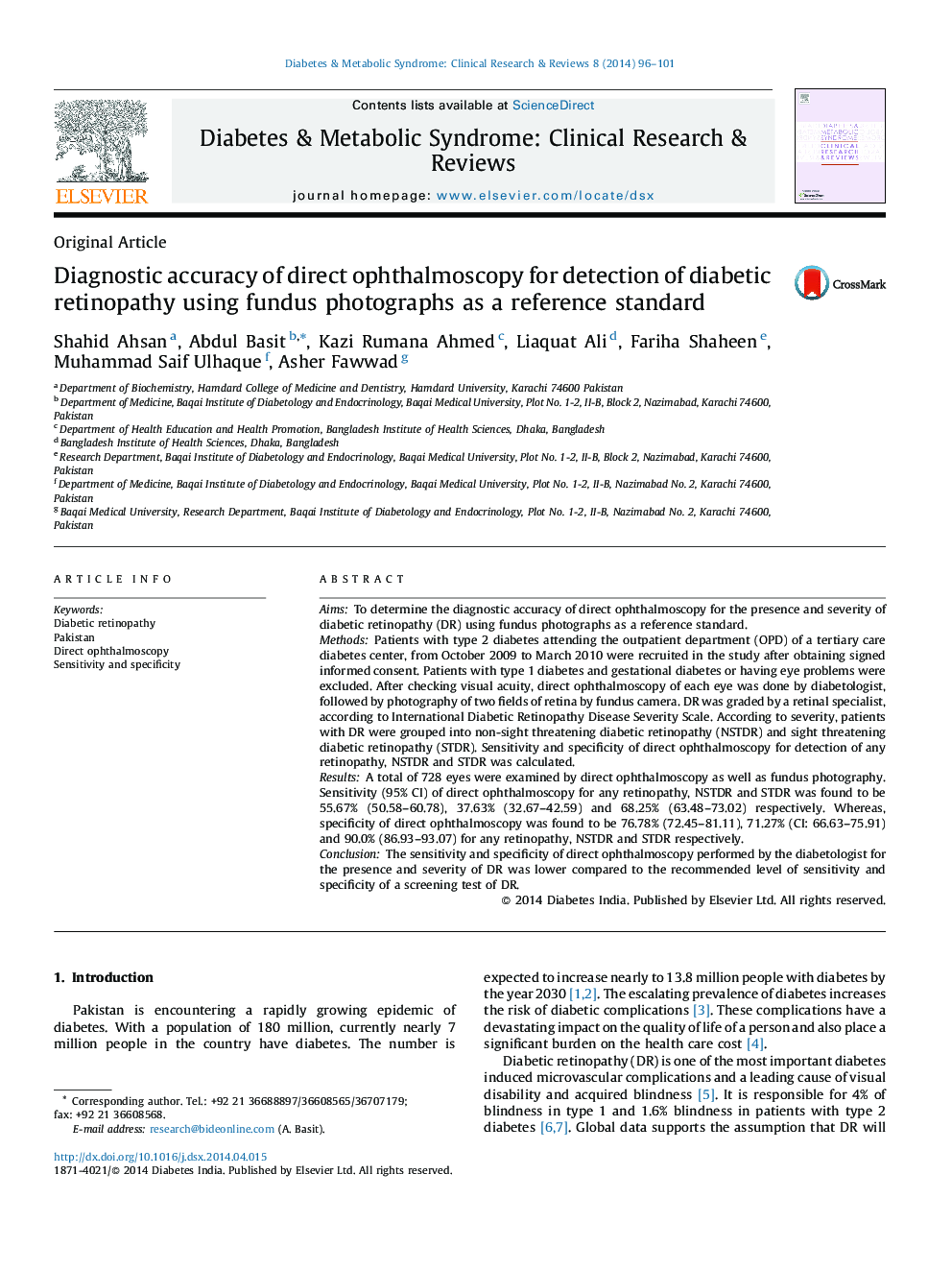| Article ID | Journal | Published Year | Pages | File Type |
|---|---|---|---|---|
| 2909896 | Diabetes & Metabolic Syndrome: Clinical Research & Reviews | 2014 | 6 Pages |
AimsTo determine the diagnostic accuracy of direct ophthalmoscopy for the presence and severity of diabetic retinopathy (DR) using fundus photographs as a reference standard.MethodsPatients with type 2 diabetes attending the outpatient department (OPD) of a tertiary care diabetes center, from October 2009 to March 2010 were recruited in the study after obtaining signed informed consent. Patients with type 1 diabetes and gestational diabetes or having eye problems were excluded. After checking visual acuity, direct ophthalmoscopy of each eye was done by diabetologist, followed by photography of two fields of retina by fundus camera. DR was graded by a retinal specialist, according to International Diabetic Retinopathy Disease Severity Scale. According to severity, patients with DR were grouped into non-sight threatening diabetic retinopathy (NSTDR) and sight threatening diabetic retinopathy (STDR). Sensitivity and specificity of direct ophthalmoscopy for detection of any retinopathy, NSTDR and STDR was calculated.ResultsA total of 728 eyes were examined by direct ophthalmoscopy as well as fundus photography. Sensitivity (95% CI) of direct ophthalmoscopy for any retinopathy, NSTDR and STDR was found to be 55.67% (50.58–60.78), 37.63% (32.67–42.59) and 68.25% (63.48–73.02) respectively. Whereas, specificity of direct ophthalmoscopy was found to be 76.78% (72.45–81.11), 71.27% (CI: 66.63–75.91) and 90.0% (86.93–93.07) for any retinopathy, NSTDR and STDR respectively.ConclusionThe sensitivity and specificity of direct ophthalmoscopy performed by the diabetologist for the presence and severity of DR was lower compared to the recommended level of sensitivity and specificity of a screening test of DR.
